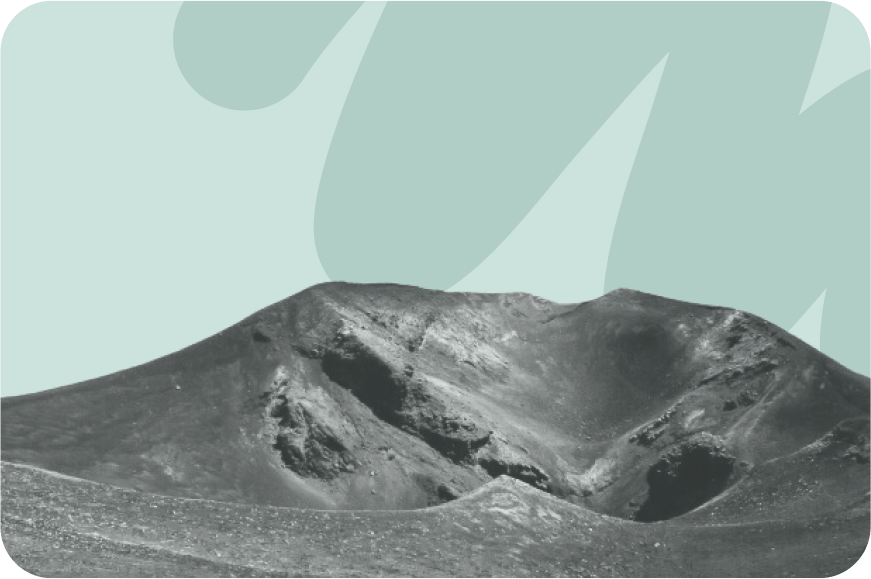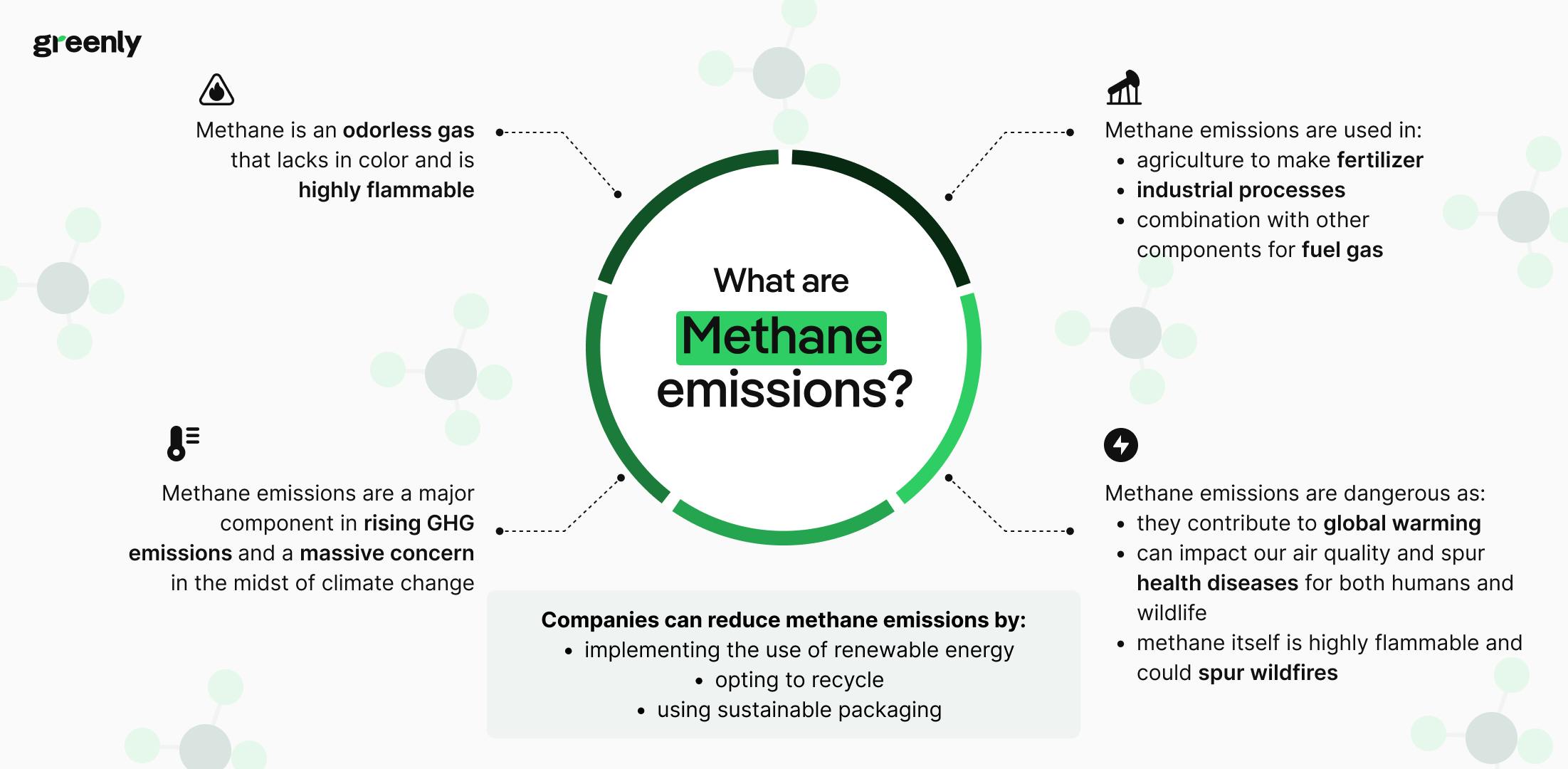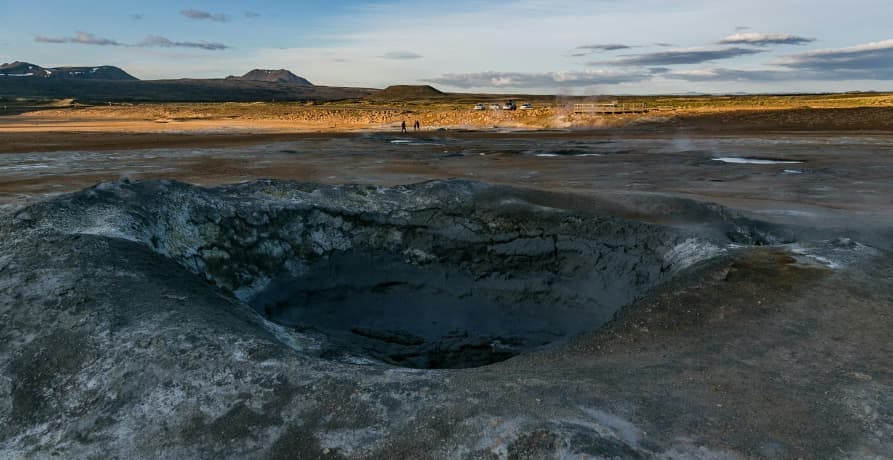ESG / CSR
Industries
The Gates of Hell Turkmenistan



The Gates of Hell might sound like something out of a piece of fiction but it's a very real place that exists here on Earth. Formally known as Darvaza Crater, the 39-metre-wide and 30-metre-deep flaming crater, located in the Karakum desert in north-central Turkmenistan has been continuously burning for over fifty years, belching harmful greenhouse gases into the atmosphere.
👉 In this article, we delve into the environmental implications of Turkmenistan's Darvaza Crater and the country's challenges in managing methane emissions.
What is the Darvaza Crater, aka the Gates of Hell?
The Darvaza Gas Crater is located in Turkmenistan's Karakum Desert and is named after the nearby village of Darvaza. Situated in Central Asia, the former Soviet republic is rich in oil and gas. Sitting atop the Amu-Darya Basin, large amounts of these natural resources exist beneath the crater's surface - predominantly methane. It's this methane, escaping through the crater's crust, that provides fuel for the perpetually burning flames.
Usually methane stores like this are either harnessed by the petroleum industry or simply escape into the atmosphere unnoticed. The fact that the crater - referred to locally as the Light of Karakum - has been burning for decades is what makes this particular location stand out.
The gas crater is certainly a sight to behold, the gaping hole in the ground is constantly alight with the fiery glow of the burning methane, attracting tourists from around the world. However, in recent years the idea has been floated that the flames should be extinguished and the gas used for something more practical.
How was the Darvaza Crater formed?
While the true story of the crater's origin cannot be verified, the most commonly cited reason is an industrial accident. The story goes that during the 1970s, Soviet scientists were drilling in the area when the earth collapsed forming a large gaping crater in the Earth's crust. Concerned about the release of harmful methane, they decided to try and burn the gas off, expecting it to run out within a few weeks. Little did they expect that it would still be burning five decades later!
Origin story aside, the formation of the Gates of Hell is a result of both natural processes and human activities. It's likely that the ground gave way due to the disintegration of underground salt layers, causing the top layers to collapse and forming the crater that you see today.
Underneath the layers of the earth is a natural gas field, filled with methane. For whatever reason, the escaping natural gas caught fire, and it has been burning ever since. Flames inside the Darvaza Gas Crater can reach between 10 and 15 metres in height, and the intense heat inside the fiery hole can reach above 1,000 degrees Celsius!
Why is methane an issue in Turkmenistan?
Turkmenistan is one of the most prolific emitters of methane. An investigation carried out by the Guardian revealed that methane leaks from two of the country's main fossil fields resulted in more global heating than the entire carbon emissions of the United Kingdom in 2022. The country was also responsible for 184 super-emitter events in the same year (ie. sites that are releasing large quantities of methane into the atmosphere).
The country's ageing fossil fuel infrastructure is largely responsible for the methane leaks. Leaky wells, pipelines, and other industrial sites remain unresolved and continue to release harmful methane into the atmosphere.
Why is this an issue? Well, methane (CH4) is a hydrocarbon and a primary component of natural gas. It is also a greenhouse gas which means that it affects the planet's atmosphere and global temperatures.
Methane is the second most common greenhouse gas after carbon dioxide (CO2) and makes up around 16% of the world's GHG emissions. Even though carbon dioxide accounts for the majority of global emissions, methane is 28 times more potent than CO2 at trapping heat in the atmosphere. And over the last two decades, the level of methane in the atmosphere has more than doubled - primarily due to human activity.
Methane also has a much shorter atmospheric lifetime than Carbon Dioxide. CO2 remains present in the atmosphere for between 300 and 1,000 years, whereas methane's atmospheric lifetime is only 12 years. Yet, because of its ability to trap more heat in the atmosphere, it is around 80 times more harmful than CO2 over its lifespan, contributing to more than a quarter of the global warming we are experiencing.


Is the Darvaza Crater a methane source?
Surprisingly, the Darvaza Gas Crater is of relatively little significance when it comes to methane emissions. Of course, the leak is harmful, however, the fact that it's burning prevents a lot of the methane gas from escaping into the atmosphere. In fact, in comparison to the country's other methane leaks, the crater's impact is much less concerning.
The continually burning fire at the site ensures that most of the methane that escapes is turned into a mix of carbon dioxide and water vapour. It goes without saying that carbon dioxide is harmful to the environment. As a greenhouse gas, it also contributes to global warming, however, it is much less potent than methane and the least harmful of the two gases. Therefore, in its current form, the Gates of Hell aren't really considered to be a significant methane source.
However, the unique appearance of the burning crater is still powerful in its ability to attract the attention of the global media. The image of the burning crater serves as a visually arresting symbol of the country's high methane emissions.

Can the Gates of Hell be closed?
Even though the Darvaza Crater isn't considered to be a significant methane source, it's still harmful to the environment and responsible for releasing significant quantities of carbon dioxide over its lifetime. Additionally, the burning of natural gas results in harmful pollutants such as sulphur dioxide (So2), nitrogen oxides (NOx), and particulate matter.
Pollution and greenhouse gases aside, the crater also has the potential to impact the environment negatively in other ways. For a start, it's situated in the Karakum desert, a fragile ecosystem with unique vegetation and wildlife. The continuous burning has the potential to impact this. Additionally, the fact that the Gates of Hell has become a major tourist attraction also means that the area is experiencing increased foot traffic, pollution from transportation, and growing waste.
These considerations have led some to call for the fires to be extinguished and for the gas to be sealed to prevent it from escaping from the earth. So, how might this be achieved?
As it turns out, extinguishing the fire is a relatively simple task. It could easily be achieved by spraying quick-dry cement into the crater floor. You simply need to remove the oxygen that is fuelling the fire. Unfortunately, this is only part of the issue, extinguishing the fire doesn't seal the methane source. The methane would simply find other ways to reach the surface. And without the flame to burn off the gas, this would actually cause more harm than it does now.
The solution is therefore not quite so simple, it requires understanding what exactly is going on inside the Darvaza Crater. If the subsurface fissure responsible for the gas could be identified then a more effective solution could potentially be within grasp. For example, concrete could be inserted into the rupture, essentially plugging the source. However, without exploratory work to understand the source of the methane nothing can be done. Some experts worry that even if engineers could identify the source, sealing an underground rupture might not even be possible - at the very minimum, it certainly wouldn't be easy.
Another option that could potentially be considered is the use of explosive devices to seal off the methane source. This works by delivering an explosive device close to the source of the methane. The explosion removes the oxygen, extinguishing the fire, while also destroying the rupture responsible for the leak of methane. This method has already been employed to extinguish industrial well fires. Yet, this option seems unlikely with experts highlighting the potential dangers of such a technique.
Without any obvious solution to the issue, some experts have simply recommended that the government of Turkmenistan simply let it burn. After all, carbon dioxide is preferable to methane, and when compared to other methane sources within the country the Gates of Hell is comparatively insignificant.
Interestingly, the Darvaza Crater, while an environmental concern, also offers unexpected scientific insights that complicate the decision to extinguish it. In 2013, the Extreme Microbiome Project led by George Kourounis collected soil samples from the crater’s base, revealing extremophiles - heat-adapted bacteria thriving in its extreme conditions. These discoveries have sparked scientific curiosity about how life can survive in such harsh environments, offering valuable information for understanding ecosystems both on Earth and potentially on other planets. This unique opportunity for scientific exploration adds another layer of complexity to the debate on whether the fires should be extinguished, as the crater not only poses environmental risks but also contributes to critical research.
Turkmenistan’s other methane leaks
The Gates of Hell might grab most of the headlines, but it's just a small part of the country's wider methane issue. Even in the area surrounding area, there are other gas craters, for example, just 23km down the road is a crater filled with water where methane gas bubbles can be seen rising to the surface.
Turkmenistan, rich in natural gas reserves, faces significant challenges when it comes to managing its methane emissions - something that is essential for reducing global GHG emissions and limiting global warming.
The country's legacy of Soviet-era infrastructure contributes largely to its methane problem. Ageing pipelines, inefficient gas extraction methods, and poorly maintained equipment lead to significant methane leakage.
National efforts to curb methane emissions
Recognising the environmental and economic costs of these emissions, Turkmenistan has begun to take steps to address the issue. In 2023, the president launched initiatives to try and curb methane emissions stemming from the country's oil and gas sector. A roadmap has also been carved out, paving the way for the country to potentially join the 150 signatories to the Global Methane Pledge, aiming to reduce methane emissions by 30% by 2023.
Measures to reduce emissions include modernising legislation, collaborating with foreign partners to set up projects, and partnering with the International Methane Emissions Observatory (IMEO). Additionally, President Serdar Berdimuhamedov has stressed that the country is investing in modernising the oil and gas sector, with an emphasis on reducing methane emissions.
This all sounds great, however, critics warn that the Turkmenistan government is hesitant to spend money on initiatives and that the success of cutting methane emissions will likely hinge on the availability of foreign investment. Another significant issue is tracking and monitoring methane emissions and the effectiveness of any measures to reduce them. Turkmenistan is an authoritarian state, so gathering accurate information remains challenging.
How Greenly can help
Reducing greenhouse gas emissions is a critical responsibility for businesses across all industries. As companies face increasing pressure to reduce their carbon footprints and contribute to global decarbonisation efforts, it’s essential to have the right tools in place to manage, track, and reduce emissions effectively. Greenly offers a full suite of carbon management services that empower businesses to make informed decisions and take meaningful action towards sustainability goals.
Carbon Management Solutions with Greenly
At Greenly, we provide businesses with the expertise and tools needed to navigate their carbon management process. From calculating emissions to developing tailored decarbonisation strategies, our platform supports companies at every step of their sustainability journey.
Tracking and Reducing GHG Emissions:
Greenly’s platform enables companies to track their Scope 1, 2, and 3 emissions, offering an overview of their carbon footprint. This data is essential for developing strategies to reduce emissions and meet sustainability targets, as well as complying with regulatory requirements.
Tailored Decarbonisation Plans:
Beyond emissions tracking, Greenly works with businesses to craft decarbonisation plans. Our experts help identify the key areas for carbon reduction, guiding companies through strategies to achieve their net-zero ambitions.
Supporting Supply Chain Emissions Reduction:
Addressing Scope 3 emissions, which arise from the supply chain, can be particularly challenging for companies. Greenly assists businesses in identifying high-emission areas within their supply chains and working collaboratively with suppliers to implement sustainable changes.
User-Friendly Platform for Carbon Management
Greenly’s intuitive platform allows businesses to monitor emissions, track progress against reduction goals, and integrate sustainability into day-to-day operations. Whether your company is just starting its sustainability journey or looking to enhance existing efforts, Greenly makes it easy to manage emissions and work towards decarbonisation.
Why Choose Greenly?
Greenly offers a comprehensive solution for businesses looking to reduce their carbon footprint and contribute to a sustainable future. Our end-to-end services, from emissions tracking to actionable decarbonisation strategies, enable companies to align their environmental goals with broader industry standards. By partnering with Greenly, your company can become a leader in sustainability and drive positive change in the fight against climate change.






